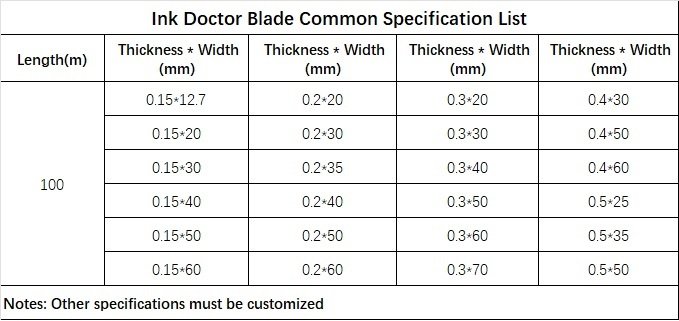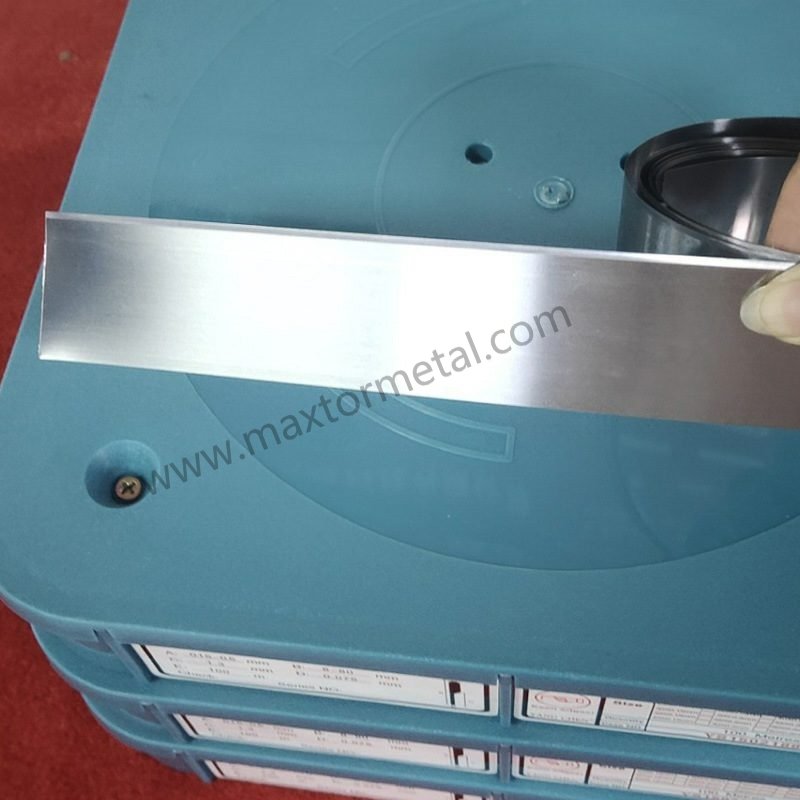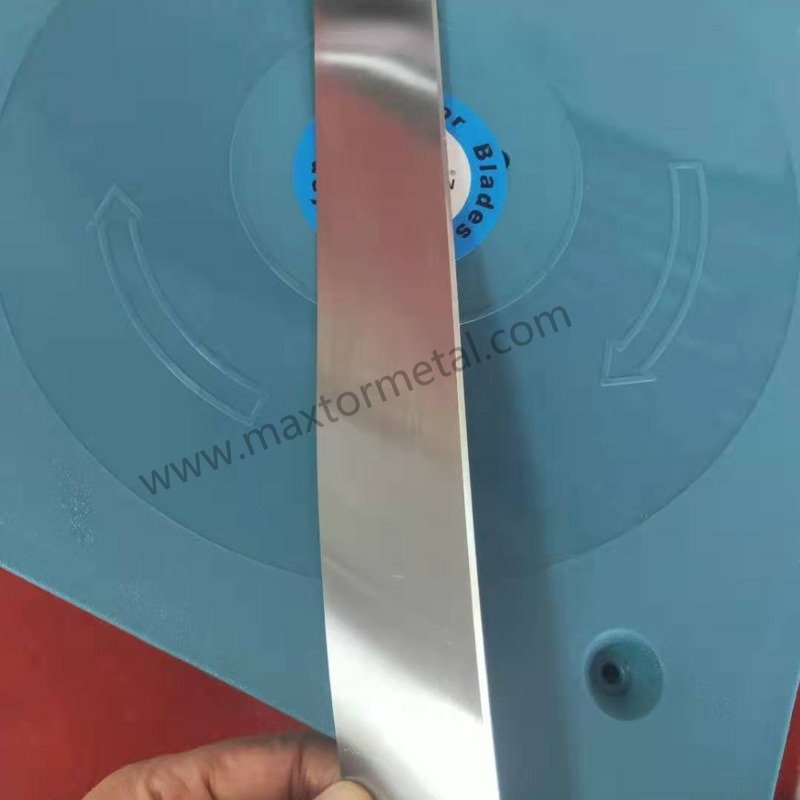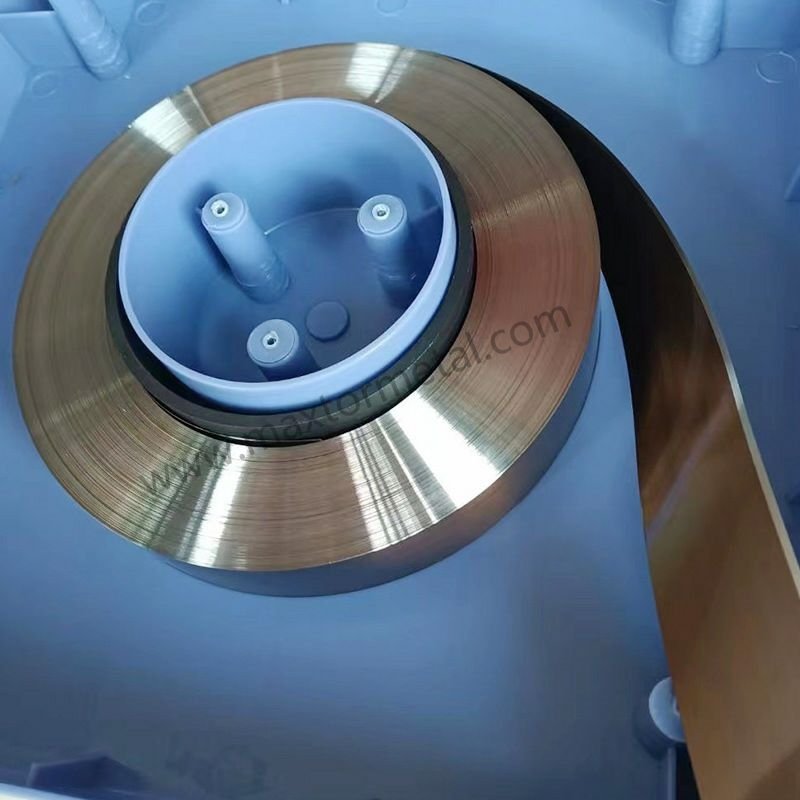| 다른 이름들 | 잉크 스크레이퍼 |
|---|---|
| 원산지 | 중국 |
| 애플리케이션 | 인쇄기계, 그라비아 인쇄, 플렉서블 인쇄, 플라스틱 인쇄 |
| 재료 | SK4,C100,20C |
| 모델 번호 | GP-DB |
| OEM 서비스 | 사용 가능 |
| 지불 조건 | L/C, T/T, 웨스턴 유니온 |
| 패키지 | 판지 상자, 나무로 되는 케이스에서 |
| 배달 시간 | 7~20일 |
공유 대상:
Metal Industrial has prioritized meeting customer needs for many years by continuously adding new features to their ink doctor blade. Our blades are used in gravure packaging, flexographic printing, UV flexo, offset varnishing, decorative materials printing, pressure-sensitive printing, screen printing, and coating applications.
Metal Industrial은 정밀 CNC 생산 라인을 사용하여 고품질 잉크 닥터 블레이드를 생산합니다. 우리의 엄격한 생산 및 검사 프로세스는 닥터 블레이드 업계에서 우리 제품이 돋보일 수 있도록 보장합니다.
품질 우선 표준을 준수하고 고객 요구 사항에 초점을 맞춘 Metal Industrial을 통해 고객은 장시간 인쇄 작업에서도 일관된 인쇄 품질을 유지하고 가동 중지 시간을 최소화할 수 있습니다.
당사의 잉크 닥터 블레이드는 그라비아 및 플렉소그래픽 인쇄에 적합합니다. 색상 톤, 줄무늬, 필라멘트, 줄무늬, 크롬층 마모 등의 문제는 인쇄 기계 및 기판 재질의 다양성으로 인해 일반적으로 발생합니다. Metal Industrial은 이러한 다양한 요구 사항을 해결하기 위해 다양한 블레이드를 제공합니다. 그라비어 포장 인쇄의 경우 잉크가 두꺼울수록 줄무늬가 생기고 블레이드와 실린더에 추가 마모가 발생하는 경우가 많습니다. 당사의 블레이드는 이러한 잉크에 적응하고 재사용이 가능하므로 가동 중지 시간이 줄어듭니다.

Metal Industrial의 세라믹 블레이드는 플렉소그래픽 인쇄의 코팅 및 라미네이팅 공정에 이상적입니다. 최신 플렉소 프레스는 일반적으로 잉크 전사를 위해 아닐록스 롤러와 닥터 블레이드를 사용합니다. 플렉소 프레스의 인쇄 폭은 200mm에서 4000mm까지입니다. 단일 블레이드 시스템은 소형 프레스에 적합한 반면, 폐쇄형 시스템은 중대형 프레스에 더 적합합니다. 인쇄 속도는 분당 50~450미터입니다. 리버스 블레이드의 각도는 일반적으로 30°~40°입니다. 세라믹 아니록스 롤러의 표면이 매끄러우므로 블레이드 압력이 최소화되어야 합니다. 블레이드 수명에 영향을 미치는 요인에는 아니록스 셀의 모양과 줄 수, 블레이드 두께가 포함됩니다.
Metal Industrial의 세라믹 블레이드는 0.20mm, 때로는 0.15mm 두께의 블레이드를 사용하는 플렉소그래픽 인쇄에 적합합니다. 폐쇄형 시스템에는 백업 블레이드가 필요하지 않으므로 표준, 베벨 및 복합 블레이드를 모두 적용할 수 있습니다.
라벨 인쇄와 같은 하프톤 인쇄의 경우 블레이드 두께는 일반적으로 0.075mm입니다. 일반적인 원칙은 블레이드가 얇을수록 성능이 더 좋다는 것입니다.
설치 요구 사항: 그라비아 인쇄의 경우 블레이드 설치에 이상적인 접촉각은 55-65°입니다. 각도가 작을수록 닦아내기가 불완전하고 플레이트 안개가 발생할 수 있습니다.

A doctor blade is a thin, flexible blade, typically made of metal or plastic, used in various industrial coating and printing processes to control the thickness of a liquid film applied to a surface. In printing, particularly flexography and gravure, the doctor blade plays a crucial role in removing excess ink from the surface of the printing cylinder (anilox roll or gravure cylinder), ensuring that only the ink held within the engraved cells is transferred to the substrate. The term “doctor blade” originates from its function of “wiping off” or controlling the amount of liquid.
Beyond printing, doctor blades are also used in other coating applications to meter or level the thickness of coatings applied to various substrates.
Doctor blades have diverse applications across several industries:
The selection of material for doctor blades is critical and depends on the specific application, the material being processed (ink, coating solution), the substrate, and the speed of operation. Common materials include:
Doctor blades come in various edge profiles and thicknesses to optimize performance for different applications:
The thickness of the doctor blade also varies depending on the application and the required flexibility and stiffness. Common thicknesses for metal blades range from 0.004″ to 0.020″ or more.
The doctor blade operates by applying controlled pressure against the surface of a rotating cylinder (anilox or gravure) or a substrate being coated.
In printing:
In coating:
The effectiveness of a doctor blade depends on factors such as the blade material, edge profile, thickness, the angle at which it is held against the cylinder or substrate, the applied pressure, the surface condition of the cylinder or substrate, and the properties of the ink or coating being used. Proper selection, setup, and maintenance of the doctor blade are crucial for achieving optimal results in printing and coating processes.
환영합니다 묻다!
If you don’t find the shear blade you are looking for, we can also customize it, see our “맞춤형 블레이드” to learn how!
수입의 편리함을 누리기 쉽고, 운송에서 통관까지 전체 과정을 우리가 처리해 드립니다. 귀하는 VAT만 지불하고 상품이 회사에 도착할 때까지 기다리시면 됩니다.
우리는 수많은 응용 분야에서 블레이드가 사용되는 것을 보아 왔으며 정확성, 내구성 및 타의 추종을 불허하는 경쟁력 있는 가격을 제공하여 귀하가 진행하는 모든 프로젝트를 처리할 준비가 되어 있습니다.
도면, 스케치 또는 샘플을 제공하든, 우리는 귀하를 위해 도면을 그리고 제조할 수 있습니다. 또한 거의 모든 산업용 툴링 애플리케이션을 개선하기 위해 기존 설계 및 사양을 수정하는 데 도움을 줄 수 있습니다. 귀하의 특정 요구 사항에 대해 논의하려면 전담 영업 팀에 문의하십시오.
품질을 관리하기 위해 첫 번째 제품 검사, 입고 자재 검사, 인증된 자재, 진행 중 품질 검사, 최종 품질 검사를 포함한 일련의 테스트와 검사를 수행합니다.
귀하가 수입업체, 유통업체, 도매업체 또는 최종 사용자이든, 우리는 최소 MOQ, 번거로운 문의 없음, 더 큰 구매의 자유를 통해 귀하의 참여를 환영합니다.
당신의 전담 모니터가 되어, 생산 라인의 모든 중요 노드를 정기적으로 전송하세요. 아무리 멀리 떨어져 있어도 제품의 진행 상황을 최대한 파악하세요!




2. 상자 제조 효율성 향상을 위한 비밀 무기: 최고 수준의 플렉소 인쇄 슬로팅 머신 및 고성능 블레이드 공개
난징 Metal 산업 CO., 제한
Mingjue 산업 단지, Lishui, 난징, 장쑤성, 중국